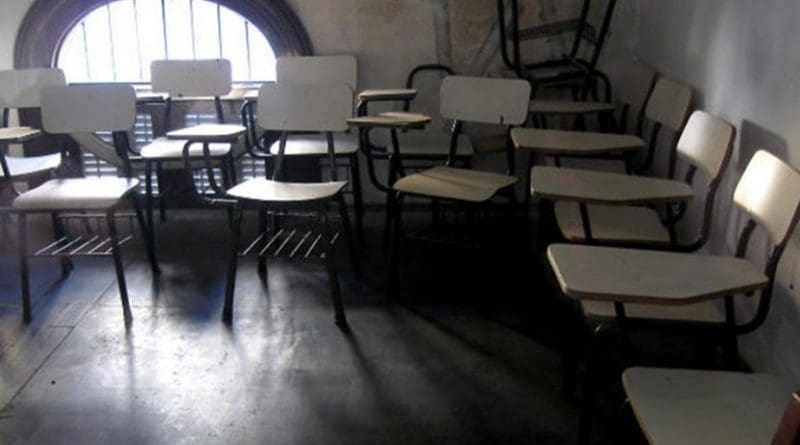School Suspensions Related To Increases In Subsequent Offending
About 3.5 million students are suspended each year, and school punishment has been tied to a variety of negative outcomes. A new study took a longitudinal look at how school suspensions are related to offending behaviors that include assault, stealing, and selling drugs. It found that rather than decreasing subsequent offending, school suspensions increase this behavior.
The study, by researchers at Bowling Green State University and Eastern Kentucky University, is published in Justice Quarterly, a publication of the Academy of Criminal Justice Sciences.
“Our findings suggest that suspending students from school can serve as a negative and harmful turning point in adolescence that increases offending over time,” according to Thomas James Mowen, assistant professor of sociology at Bowling Green State University, who led the study. “Intensifying disciplinary strategies–what some have called the criminalization of school discipline–may do more harm than good and could result in more crime in schools, neighborhoods, and communities.”
Mowen and his colleagues studied to what extent being suspended from middle and high school was a turning point that led to more deviant behavior. They also examined whether school suspensions, the most common response to youth’s misbehavior at school, amplified the likelihood that adolescents would offend as they grew into young adults. Offending was defined as attacking or assaulting someone, possessing a gun, selling illegal substances, destroying property, and stealing.
The study used data from the National Longitudinal Survey of Youth 1997 (NLSY97) to examine the role, cumulative effect, and impact of school suspensions on subsequent offending. The NLSY97 included 8,984 youth from a variety of racial and ethnic backgrounds from all 50 states who were between 12 and 18 years at the start of the study. Information about the participants was collected annually; this study focused on the first four years of data because after four years, most of the participants had aged out of school.
Participants were asked if they had been suspended from school as well as how many times they had engaged in offending behavior. Researchers then measured the effect of school suspensions on subsequent offending.
Overall, respondents reported they had been suspended 12.3% of the time, with students who were suspended once likely to report being suspended again. The study also found that exclusionary school discipline (i.e., suspensions) increased subsequent offending, substantially amplifying deviant behavior as the youth moved through adolescence and into adulthood. And repeated suspensions further amplified subsequent offending.
Perhaps most importantly, the study found that suspensions increased offending behaviors over time, even after accounting for prior levels of offending. This means that even among youth who reported offending behaviors prior to being suspended, exclusionary school discipline still contributed to significant increases in offending over time.
The study also found that White youth reported higher levels of offending than Black and Hispanic youth. Because Black and Hispanic youth are far more likely to be suspended than White youth, the researchers suggest that the effects of punitive school discipline may exacerbate differences in offending across racial and ethnic groups over time.
The researchers took into account a variety of factors that influence offending behavior, including whether youth dropped out of school, how youth felt about their schools (e.g., whether they felt safe, thought their teachers were interested in them, believed school discipline was fair), how they felt about their families, and their families’ income. The study also considered youth’s relationships with their peers (including whether they were members of a gang) and their gender, race, and ethnicity. And it took into account prior levels of offending.
“American schools are relying increasingly on exclusionary sanctions and zero-tolerance policies to maintain control and safety,” notes Mowen. “Our findings point to the need for school officials and policymakers to recognize the negative consequences of these approaches, examine the underlying causes of students’ behavior, and change how we manage that misbehavior.”
The authors note that their study is limited because, as a household-based survey, it did not examine specific characteristics of schools. In addition, the study’s reliance on self-reported information (from the students) may limit the accuracy of the data due to respondents’ ability to recall past events, desire to provide socially acceptable answers, and other biases. Finally, because school discipline has intensified since the data were collected, the authors posit that their findings may underestimate the effect of suspensions on subsequent offending.

